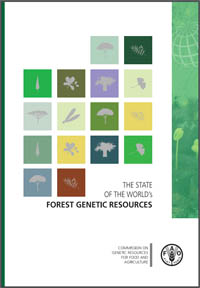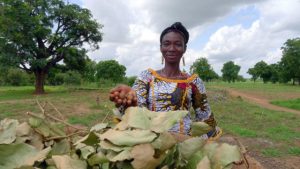 In the next phase starting in 2017, the CGIAR Research Program on Forests, Trees and Agroforestry (FTA) will feature a new Flagship 1: Tree genetic resources to bridge production gaps and promote resilience. It includes elements of what is now Flagship 2 Management and conservation of forest and tree resources, coordinated by Laura Snook of Bioversity International. Before the start of Phase II, Ramni Jamnadass, Co-Leader, Tree Diversity, Domestication and Delivery at the World Agroforestry Centre (ICRAF) and Coordinator t of the future Flagship 1 reflects on the most important partnerships within her research area. Read more on partnerships here.
In the next phase starting in 2017, the CGIAR Research Program on Forests, Trees and Agroforestry (FTA) will feature a new Flagship 1: Tree genetic resources to bridge production gaps and promote resilience. It includes elements of what is now Flagship 2 Management and conservation of forest and tree resources, coordinated by Laura Snook of Bioversity International. Before the start of Phase II, Ramni Jamnadass, Co-Leader, Tree Diversity, Domestication and Delivery at the World Agroforestry Centre (ICRAF) and Coordinator t of the future Flagship 1 reflects on the most important partnerships within her research area. Read more on partnerships here.
Tree genetic resources are crucial for productive and sustainable landscapes, but this importance is not yet universally recognized. Research in this area lacks coordination and appropriate investment; quality planting material needs to be developed and promoted more effectively for socio-economic and environmental benefits. Currently the tools and approaches to achieve this are inadequate.

With the restructuring of the Flagships, activities on safeguarding genetic diversity, domestication and delivery of planting material will be subsumed under a single Flagship. We’ll bring together work that was previously dispersed across different components of FTA. Key strategic partners in the new Flagship are ICRAF, Bioversity International (who previously led the Flagship) and the University of Copenhagen.
Like the other Flagships, we have partnerships with a range of advanced research institutions in Europe (such as the James Hutton Institute), America (such as the University of California, Davis) and elsewhere.
Noteworthy is the training program for 250 African plant breeders set up with the University of California, Davis, which sits under the partnership with the African Orphan Crops Consortium.

Recently, the University of New Hampshire has come on board, and we have been approached by Scotland’s Rural College (SRUC) that wants to expand their international work on orphan crops.
In terms of international organizations, we also a have very fruitful collaboration with the UN Food and Agricultural Organization, on a range of initiatives such as the State of the World’s Forest Genetic Resources. The International Union for Conservation of Nature (IUCN) has been a really good partner.
There are some evolving partnerships, which will depend on mutual expectations and if we can meet each other’s, but it’s not at all about money. One such new partnership is with the International Network for Bamboo and Rattan (INBAR) where synergies exist within work on best approaches for germplasm improvement and delivery. INBAR will be a managing partner in the next phase of FTA.
Also read: Seeing the trees as well as the forest: the importance of managing forest genetic resources
I want to also highlight partnerships with the private sector, for example with Mars, Unilever, and Natura. The partnership with Mars is both upstream, on genomics to support breeding work under the African Orphan Crops Consortium; and downstream, on cocoa farm upgrading through the use of improved planting material in Cote d’Ivoire.
The engagement with Unilever has grown over almost 12 years. Such work has established a pathway for difficult species where there’s been no investment previously but where potential for market use is high.
Robert Nasi: Partnerships make forests, trees and agroforestry program work
Diversity, commitment, challenges and shared goals: How CIRAD looks at FTA
Long-term relationships and mutual trust—partnerships and research on climate change
The best science is nothing without local voices: Partnerships and landscapes
Influence flows both ways: Partnerships are key to research on Livelihood systems











